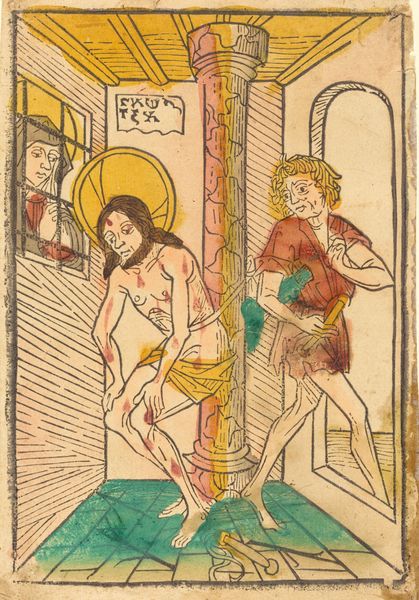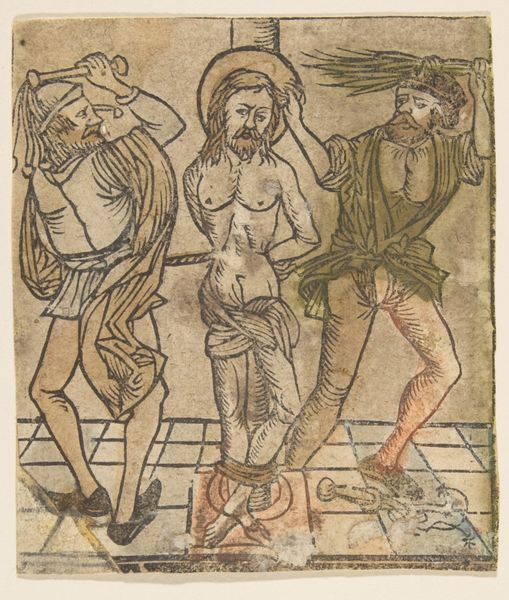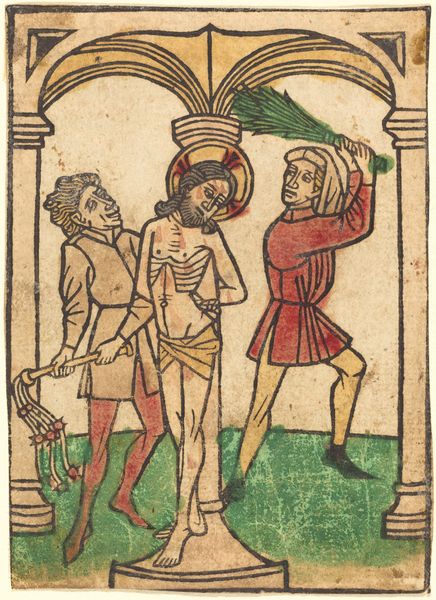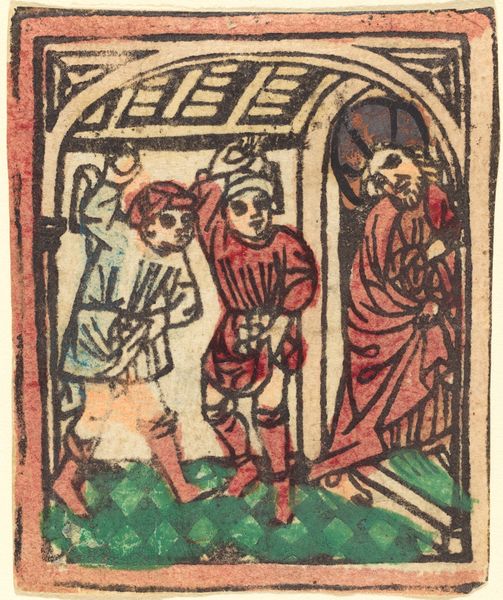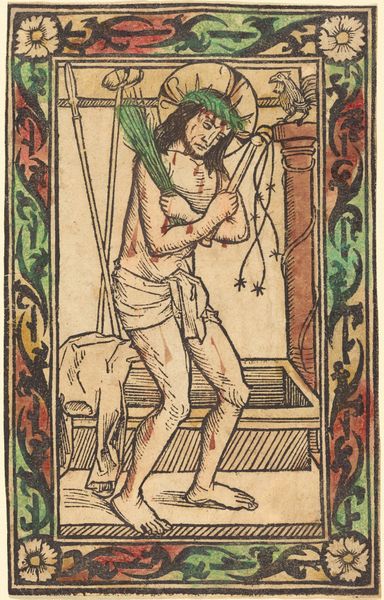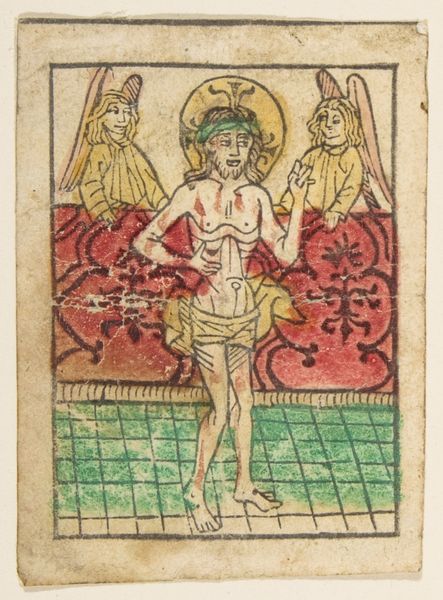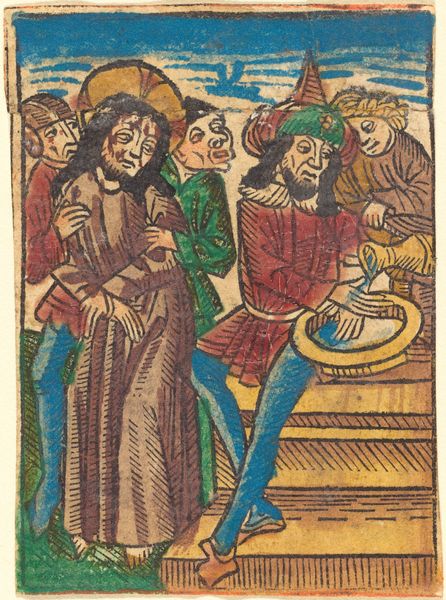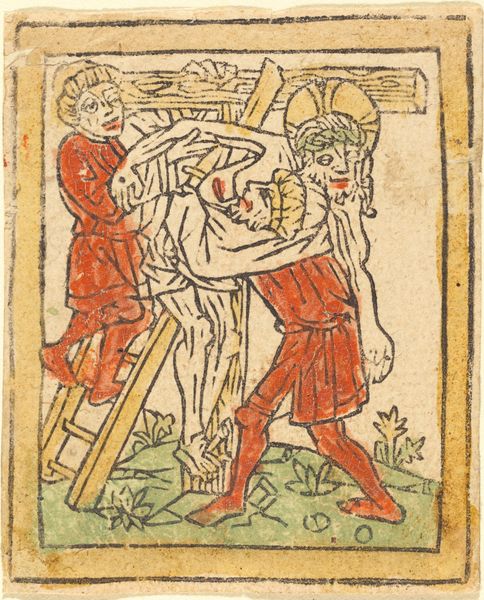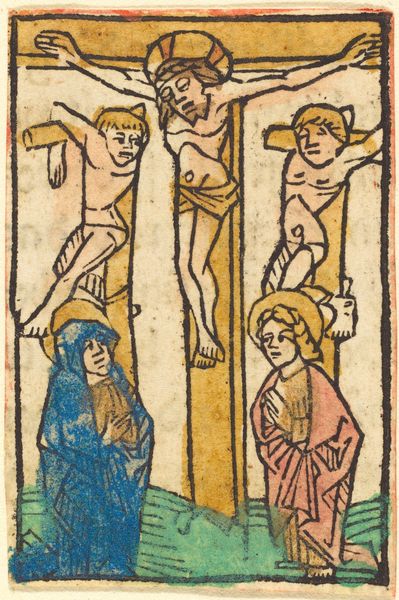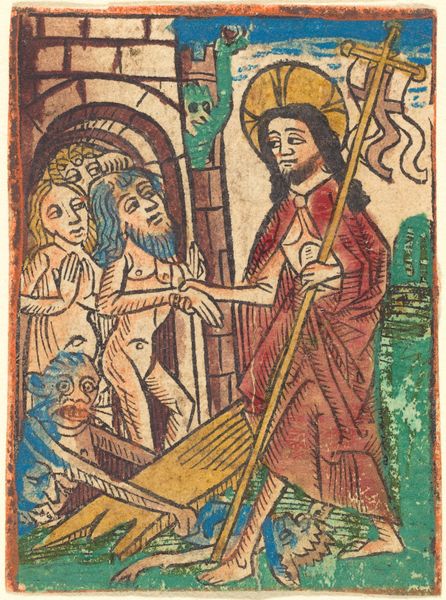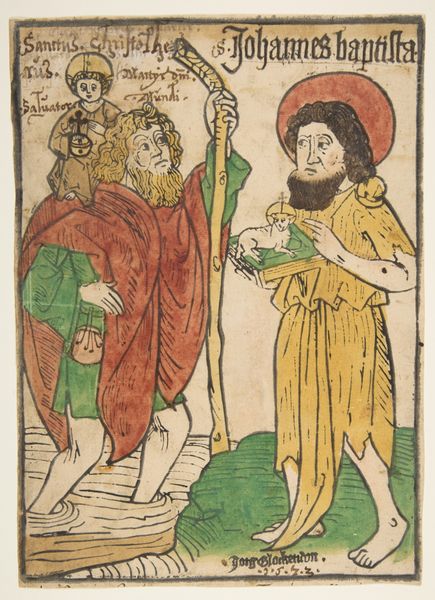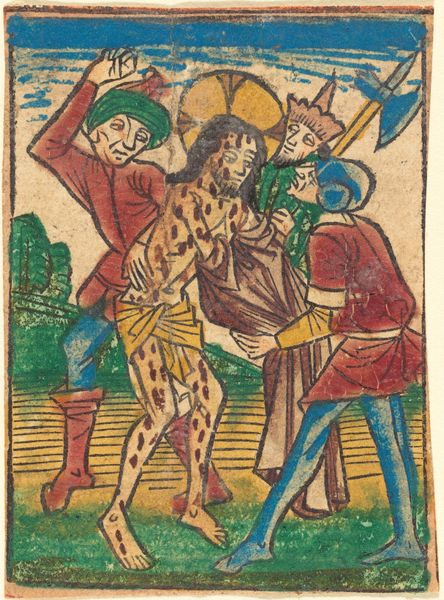
print, woodcut
#
medieval
#
narrative-art
# print
#
pen illustration
#
figuration
#
woodcut
#
history-painting
#
northern-renaissance
Copyright: National Gallery of Art: CC0 1.0
Editor: Here we have "Christ Sitting on His Tomb with One Angel," a woodcut print from around 1470-1480 by an anonymous artist. There's something so stark about its simplicity and how it conveys this pivotal moment. What catches your eye in this piece? Curator: The symbolic economy is quite compelling. We have the resurrected Christ, bearing the marks of trauma, enthroned on his own tomb—the very site of death now becomes his seat of power. But look closer: how is this power visualized? What does the halo signify when juxtaposed with the figure's wounds? Editor: It’s a very human depiction of Jesus, not idealized, which makes the halo all the more striking in contrast. I guess that prompts a deeper meditation on faith and sacrifice. Curator: Precisely! And consider the angel, the single witness in this composition. The angel’s gaze directs us, compels us, to confront this complex image. This is an instance of symbolic doubling, would you agree? Editor: Definitely, I hadn't thought of it that way. I was focused on Christ as the sole subject of the print. Curator: So, by shifting the focus to include the angel, we’re presented with a framework: How do we, like the angel, *witness* the divine and translate it into something meaningful for ourselves and our community? Editor: That gives me a lot to consider. It’s interesting how this image asks more of the viewer than I initially realized. Thank you! Curator: My pleasure! I find that the symbolic layers of works like this reveal our ongoing human struggle to understand—and visually represent—the intangible.
Comments
No comments
Be the first to comment and join the conversation on the ultimate creative platform.
